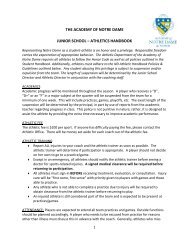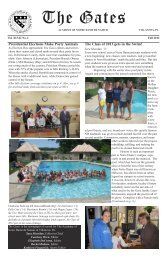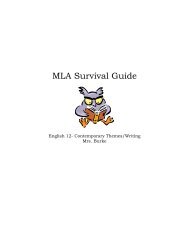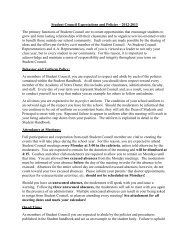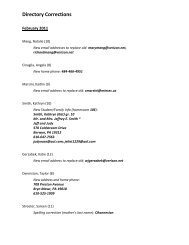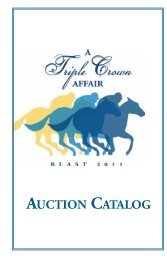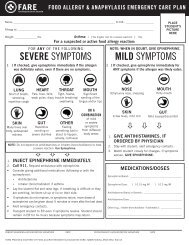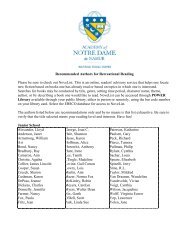Head Lice Information
Head Lice Information
Head Lice Information
You also want an ePaper? Increase the reach of your titles
YUMPU automatically turns print PDFs into web optimized ePapers that Google loves.
live lice found on the heads of 466 children using these classrooms. In a second study, live lice<br />
were found on only 4% of pillowcases used by infested volunteers. Thus, the major focus of<br />
control activities should be to reduce the number of lice on the head and to lessen the risks of<br />
head-to-head contact.<br />
Treatment<br />
Treatment for head lice is recommended for persons diagnosed with an active infestation. All<br />
household members and other close contacts should be checked; those persons with evidence<br />
of an active infestation should be treated. Some experts believe prophylactic treatment is<br />
prudent for persons who share the same bed with actively-infested individuals. All infested<br />
persons (household members and close contacts) and their bedmates should be treated at the<br />
same time.<br />
Retreatment of head lice usually is recommended because no approved pediculicide is<br />
completely ovicidal. To be most effective, retreatment should occur after all eggs have hatched<br />
but before before new eggs are produced. The retreatment schedule can vary depending on<br />
whether the pediculicide used is ovicidal (whether it can kill lice eggs).<br />
When treating head lice, supplemental measures can be combined with recommended<br />
medicine (pharmacologic treatment); however, such additional (non-pharmacologic) measures<br />
generally are not required to eliminate a head lice infestation. For example, hats, scarves, pillow<br />
cases, bedding, clothing, and towels worn or used by the infested person in the 2-day period<br />
just before treatment is started can be machine washed and dried using the hot water and hot<br />
air cycles because lice and eggs are killed by exposure for 5 minutes to temperatures greater<br />
than 53.5°C (128.3°F). Items that cannot be laundered may be dry-cleaned or sealed in a<br />
plastic bag for two weeks. Items such as hats, grooming aids, and towels that come in contact<br />
with the hair of an infested person should not be shared. Vacuuming furniture and floors can<br />
remove an infested person's hairs that might have viable nits attached.<br />
Treat the infested person(s): Requires using an over-the-counter (OTC) or prescription<br />
medication. Follow these treatment steps:<br />
• Before applying treatment, it may be helpful to remove clothing that can become wet or<br />
stained during treatment.<br />
• Apply lice medicine, also called pediculicide, according to the instructions contained in the<br />
box or printed on the label. If the infested person has very long hair (longer than shoulder<br />
length), it may be necessary to use a second bottle. Pay special attention to instructions on<br />
the label or in the box regarding how long the medication should be left on the hair and how<br />
it should be washed out.





